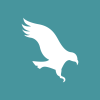Britain’s horse-owning community will be much better prepared for the next outbreak of the infectious disease equine influenza in this country than on previous occasions, according to a leading equine vet. Dr Celia Marr updated representatives of all branches of the UK equine community on the work of the Equine Infectious Disease Action Group (EIDAG), which she chairs at the annual National Equine Forum meeting.
Celia, an internal medicine specialist at Rossdale’s Newmarket practice, said the group was established by the British Equine Federation in the wake of the 2019 equine influenza outbreak, which led to the cancellation of racing events and widespread disruption throughout the equine sector.
Britain’s horse-owning community will be much better prepared for the next outbreak of the infectious disease equine influenza in this country than on previous occasions
Overall, the UK performed poorly during the epidemic, which began in late January and continued until early autumn. During that time, there were 412 individual cases on 234 premises. These were much higher figures than those recorded in the equine population of other major equine nations, such as France (62 different outbreaks), Germany (33) and the Netherlands (58). Unlike its neighbours, Britain also experienced a much larger second wave of cases during the summer months, she explained.
The greater number of infected horses reported in the UK could have been due to the efficiency of the country’s equine disease surveillance, but Celia thought this was unlikely as our continental neighbours have very effective systems in place. A more likely reason for the large number of cases was the low vaccination rate in the UK horse population – the epidemic was fuelled by the large number of unvaccinated horses changing owners or being allowed to participate in larger gatherings during the summer months.
Recognising the deficiencies in the country’s response to the challenge of equine influenza, the EIDAG was set up to provide guidance for the equine industry on minimising the risk of similar issues when the next infectious disease emerges. Advice has been prepared by a panel of veterinarians with expertise in epidemiology and internal medicine and produced for the various equine bodies and event organisers. But she pointed out that it is the responsibility of all members of the equine community to do their part.
Recognising the deficiencies in the country’s response to the challenge of equine influenza, the EIDAG was set up to provide guidance for the equine industry on minimising the risk of similar issues when the next infectious disease emerges
Indeed, taking responsibility is the first of the 10 pillars of a successful equine disease control strategy, alongside other vital components, such as vaccination, early recognition of cases and maintaining high biosecurity standards.
Celia recognised the importance of following steps proportionate to the risk for each group in the equine community. So, with vaccination, for example, the EIDAG has encouraged the adoption of “gold”, “silver” and “bronze” levels of immunisation policies for horses participating in events where they will come into contact with other equines.
Each level requires a primary course of inoculations for equine influenza and an initial six-month booster at the very least. Subsequently, the animal may receive boosters at either 6- or 12-month intervals, and passport checks will be carried out with different degrees of vigour according to the perceived risk.

As well as setting out general principles for minimising the likelihood of future events, Celia’s group has also provided support and advice in dealing with current threats. For example, EIDAG provided guidance to the British Showjumping team competing at an event in Valencia, Spain, in March 2021, where several horses tested positive for equine herpesvirus-1 (EHV-1). British horses returning from the event were quarantined and carefully monitored, and as a result, the outbreak was successfully contained.
Celia acknowledged that the success of the EIDAG’s efforts to prevent the introduction of this extremely dangerous strain of EHV-1 was built on the efforts of the Thoroughbred industry to prevent the spread of diseases likely to affect the racing calendar. Other branches of equine sport in the UK use a blood test and a PCR test of nasal swabs to monitor exposure to the virus, unlike other countries where the PCR test is the only one currently available. Having access to both testing technologies is valuable in reducing the duration of quarantine needed, she said.
The 2019 influenza epidemic highlighted the consequences of not having a coordinated response across the equine sector to any new disease threat
The 2019 influenza epidemic highlighted the consequences of not having a coordinated response across the equine sector to any new disease threat. Celia believes that the country is now “in a much better place” than it was in 2019 as a result of the efforts of EIDAG in mapping out a strategy for all branches of the industry to follow and the efforts to educate individual equestrians on their responsibilities. But there are still some unmet needs, such as a requirement for better surveillance and preventive medicine strategies for the general horse population.
Industry experts are agreed on the most important threats facing the equine population, but it seems unlikely that all branches of the equine community would agree on the priority that should be given to each condition. So, rather than relying so heavily on the efforts of the Thoroughbred industry, the wider equine sector needs to consider ways it can create and support better surveillance and control efforts, she said.










